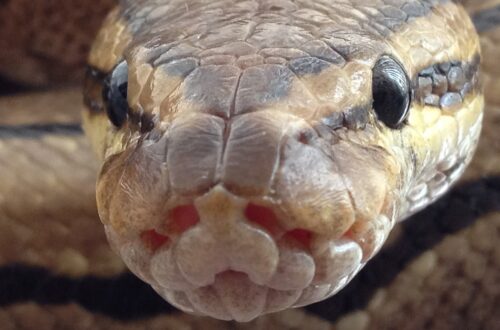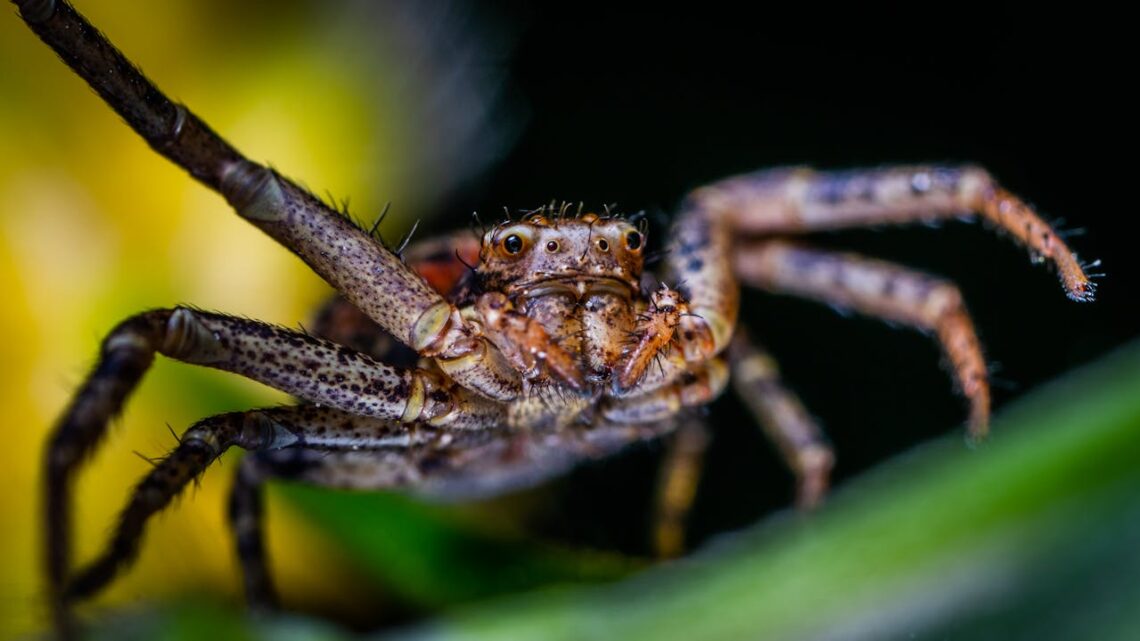
42 Fascinating Facts About Spiders: See A New Perspective
Facts About Spiders
Spiders are among the most misunderstood creatures in the animal kingdom. Feared by many and appreciated by few, these eight-legged creatures play an essential role in maintaining ecological balance. Interestingly, despite their reputation, facts about spiders reveal a world of astonishing diversity, complexity, and usefulness that often goes unnoticed.
Rethinking the Fear of Spiders
Although spiders are listed among the most common phobias, they are rarely as dangerous as people believe. In fact, the vast majority of spider species are harmless to humans.
For instance, only a few, such as black widow spiders or brown recluse spiders, pose any real threat. Yet, fear of spiders continues to dominate cultural narratives and personal anxieties.
Consequently, exploring accurate and intriguing facts about spiders may offer a new perspective.
By understanding how spiders live, what they eat, and the intricate types of silk glands they use to build webs, one may even begin to admire these complex animals.
What Makes a Spider a Spider?
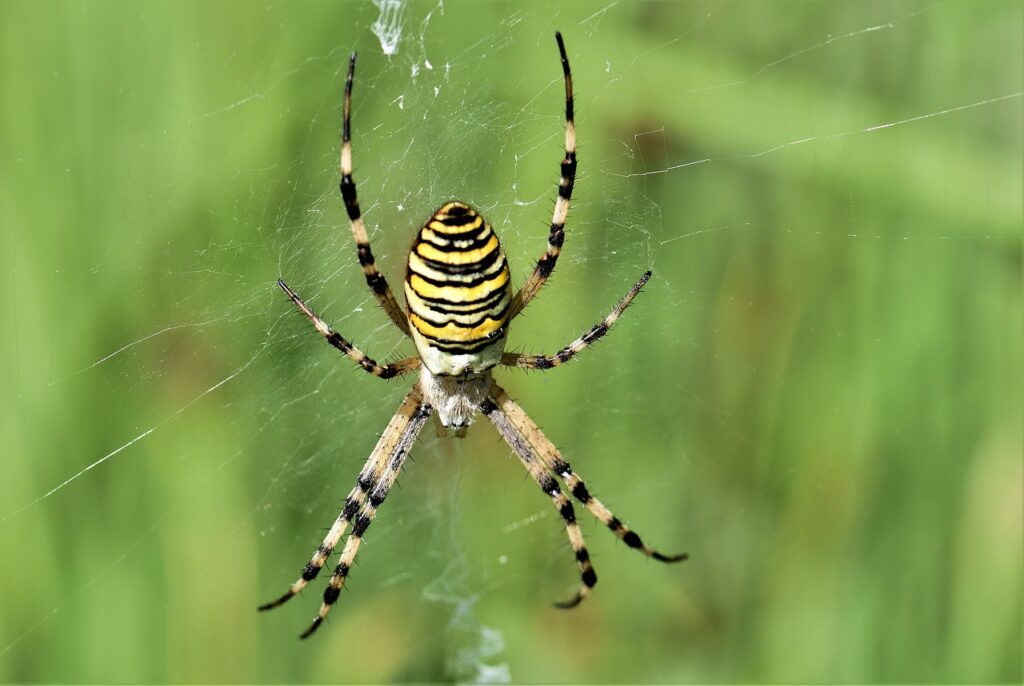
Facts About Spiders: Understanding the Spider’s Body
Spiders possess a body divided into two body segments: the cephalothorax and the abdomen. Eight legs, a hallmark feature, are attached to the front segment.
Special hairs on their legs help them detect vibrations, changes in airflow, and even prey movement.
- Pairs of legs: Always four, totaling eight.
- Venom glands: Used primarily to subdue prey.
- Spider’s spinneret: Located at the rear, this structure spins silk in different types of silk for different purposes.
Moreover, a spider’s internal structure is equally fascinating. Unlike humans, spiders use blood flow and spider’s muscles to extend their legs. That’s why a dead spider’s legs curl inward—the blood pressure drops.
Spider’s Web and Its Multiple Uses
Although web-building is commonly associated with all spiders, not every spider constructs one. Nonetheless, the spider’s web has evolved for different purposes, including:
- Capturing prey
- Building shelters
- Protecting eggs in an egg sac
- Transportation (ballooning)
A single spider can produce metres of silk, and each thread is stronger than steel by weight. This makes spider silk one of the most remarkable substances found in nature.
According to the Burke Museum, spider silk is composed of amino acids and comes in a liquid form until it exits through the spider’s spinneret.
Different Species, Different Behaviors
Web-Building Spiders vs. Wandering Spiders
Primarily, spiders can be divided into web-building spiders and wandering spiders. Web-builders, such as garden spiders and cellar spiders, stay in one location.
Meanwhile, wandering spiders, like the brazilian wandering spiders and wolf spiders, actively hunt without using a web.
Jumping Spiders and Their Unique Abilities
In particular, jumping spiders deserve special mention. Species like the regal jumping spider and male peacock spiders use their jumping ability not only for hunting but also for elaborate mating dances. Their vision is among the best in arachnids, helping them accurately judge distances.
Surprising Web Strategies and Silk Varieties
While many may imagine webs as symmetrical spirals, some spiders adopt unorthodox methods. For instance, the ogre-faced spider uses a net-casting technique, stretching a web between its legs and lunging at prey. Such behavior highlights how spiders utilize different types of silk in different ways.
Additionally, the bolas spiders produce silk that mimics insect pheromones. As a result, unsuspecting moths are lured in and captured by a sticky “bolas” of silk, rather than a web.
Therefore, the ability to adapt silk production to a variety of environments makes spiders incredibly versatile.
Spiders can spin several types of silk glands, each with a unique function:
- Dragline silk for movement and web frames
- Capture silk for sticky prey-catching strands
- Egg sac silk for protecting offspring
- Wrapping silk for immobilizing prey
Each silk serves a different purpose, tailored to the spider’s behavior and type of habitat.
The Lifecycle of Spiders: From Egg to Adult
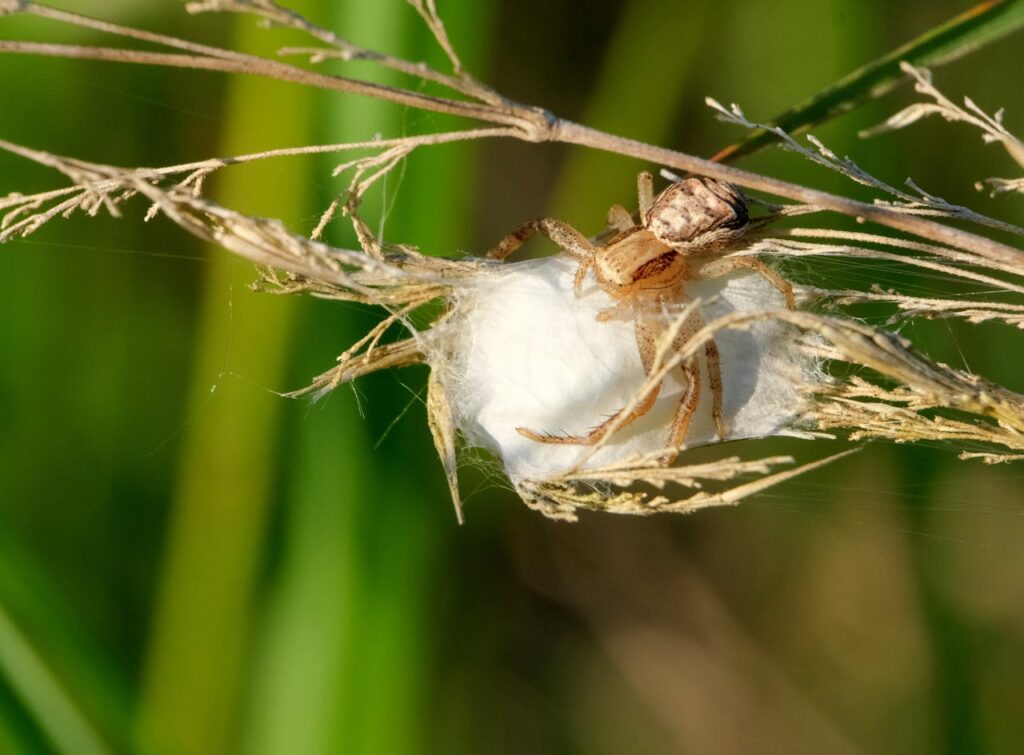
Mother Spiders and Egg Sac Protection
Female spiders display a remarkable level of care when it comes to their young. Typically, a spider lays eggs in a secure egg sac, made from specialized silk. These sacs may be hidden, carried on the back, or guarded fiercely.
Some female spiders, like wolf spiders, carry their egg sacs attached to their spinnerets. After the baby spiders hatch, they often cling to the mother’s abdomen for several days, receiving protection until they can fend for themselves.
Growth and Molting
Spiders grow by molting. Over time, as the spider’s body expands, its exoskeleton becomes too tight. At this point, a new exoskeleton forms beneath the old one, which is shed in a process known as ecdysis.
Therefore, the number of molts depends on the species. During this vulnerable stage, many young spiders fall victim to predators or environmental threats.
Size and Scope: The Largest and Smallest Spiders
Across the globe, spider sizes vary dramatically. Among the largest spiders, the goliath birdeater—found in South America—is often cited as the biggest by mass and size, with a body length reaching up to 12 inches including its legs.
Conversely, some tiny spider species, like Bagheera kiplingi, measure less than a centimeter. Uniquely, this spider is known for being mostly herbivorous, feeding on plant material—a rare trait in the spider world.
Meanwhile, garden spiders, house spiders, and cellar spiders are the most frequently encountered in human homes and gardens.
Interestingly, a sudden increase in spider sightings indoors may be due to mating season or weather shifts, rather than a spider infestation.
Venom, Bites, and Misunderstandings
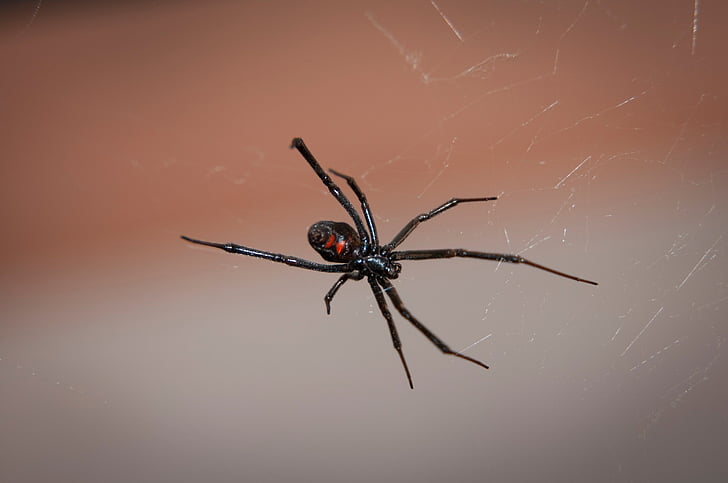
Spider Bites: Dangerous or Harmless?
Although widely feared, most spider bites are no more harmful than a bee sting. However, a few deserve caution:
- Black widow spiders (especially the female black widow) with a red hourglass shape
- Brown recluse spiders, with violin-shaped markings
- Yellow sac spider, more common in the southeastern United States
Nevertheless, fatalities from spider bites are extremely rare. Symptoms usually include swelling, redness, and minor pain. Severe reactions occur mostly in those allergic or sensitive to venom.
Digestive Juices and Feeding Habits
Spiders do not chew their food. Instead, they inject digestive juices into their prey, breaking it down into a liquid form. Afterward, the liquid is sucked up using a specialized mouthpart.
This method is particularly useful when dealing with small animals, small mammals, or insects. Consequently, spiders help control populations of harmful insects, acting as natural pest regulators.
The Diversity of Spiders Across the Globe
Spiders are found on every continent except Antarctica, with each part of the world hosting unique spider species. In North America, common spiders include the yellow sac spider, wolf spiders, and house spiders, each adapted to varying climates and habitats.
Meanwhile, South America is home to some of the biggest spiders, including the goliath birdeater and tarantula species that prey on small mammals and reptiles.
On the other hand, tropical areas tend to harbor the most biodiversity, with a vast array of different types of spiders. These range from bright-colored male peacock spiders in Australia to camouflaged ambush hunters in dense rainforests.
Therefore, depending on the type of habitat, spider behavior, diet, and web construction techniques will differ significantly.
Interesting Facts About Spiders That Will Surprise You
Despite their fearsome reputation, spiders are fascinating. Here are some fun facts and interesting facts that might just change your perspective:
- Spiders travel long distances by ballooning—floating through the air on silk threads.
- Some abandoned spider webs are reused by other spiders or insects.
- The spider’s silk is not only strong but also water resistant and highly elastic.
- Spiders have secondary sets of eyes to detect motion and light.
- Certain types of silk glands are dedicated solely to egg protection.
Moreover, spider’s body structure is built for efficiency. Its body parts, especially the legs and abdomen, work together to maintain balance, spin silk, and sense danger.
Featured Fact:
According to the Burke Museum, a spider’s silk can absorb more energy than steel before breaking, making it a subject of interest in biomaterials science.
Understanding Spider Behavior and Communication
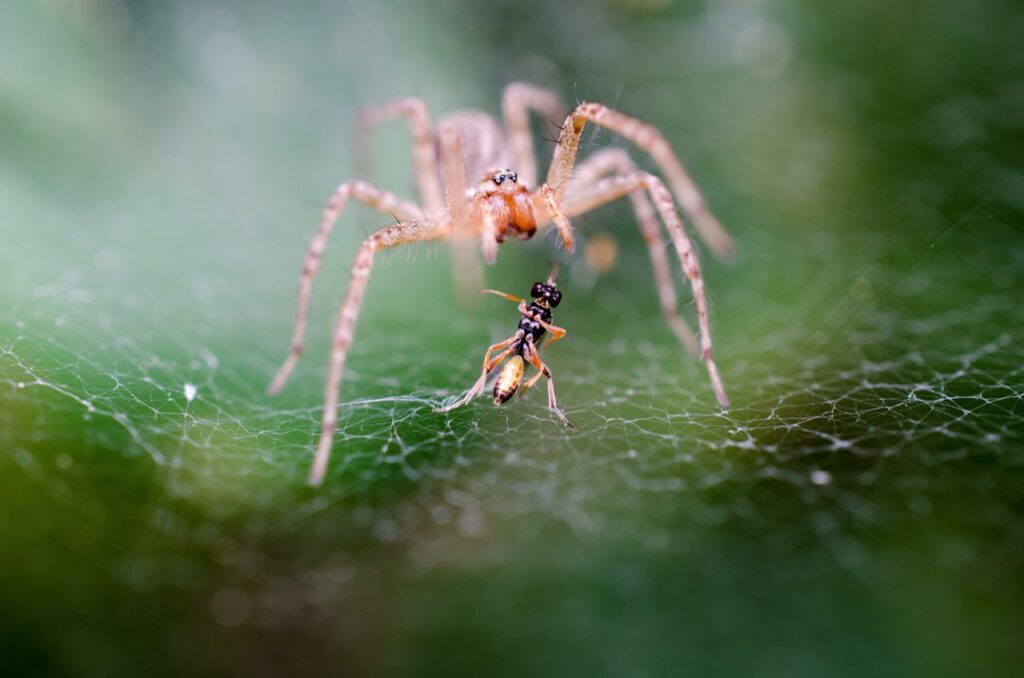
Facts About Spiders: Courtship and Mating Rituals
In most species, males are much smaller than their female counterparts. For this reason, spider mating often involves elaborate courtship behaviors. Especially in male peacock spiders, colorful displays and rhythmic dances are used to woo potential mates.
Unfortunately, the lady spider isn’t always receptive. In some species, like the female black widow, the male may become a post-mating snack. However, this does not occur in all spiders and is often overstated in pop culture.
How Spiders Detect and Capture Prey
Spiders don’t rely solely on sight. Instead, special hairs on their legs detect vibrations, air currents, and even sound. This sensitivity allows them to locate prey, predators, and potential mates effectively.
As a result, many spiders have evolved specific strategies:
- Building webs in high-traffic insect areas
- Active hunting (e.g., wolf spiders)
- Passive ambushing (e.g., bolas spiders)
Read this article Fun And Fascinating Facts About Ants (The Best 60) when you have a moment.
Spiders in Human Environments
Despite their negative image, spiders are beneficial to humans. A spider infestation, while alarming, often helps reduce populations of flies, mosquitoes, and other harmful insects. In fact, plenty of spiders in and around the home is usually a sign of a healthy ecosystem.
Nevertheless, steps can be taken to minimize unwanted interactions:
- Remove abandoned spider webs regularly
- Seal gaps and cracks in walls and windows
- Maintain low humidity to deter web-building
Over time, understanding facts about spiders may help reduce anxiety and replace fear with respect.
Evolution and History of Spiders
Fossil records show that spiders have been on Earth for hundreds of millions of years. First appearing during the Devonian period, these creatures adapted to changing environments with remarkable resilience.
Notably, early spiders lacked spinnerets and developed them over time, allowing for sophisticated web-building spiders and silk-based behaviors.
During the 17th centuries, scientific interest in spiders began to grow. Artists and naturalists documented their behavior, spinning techniques, and body structures.
Since then, continuous research has unveiled thousands of different species of spiders, some still being discovered today.
Therefore, the study of spider evolution offers valuable insights into survival strategies and biological innovation.
Silk, Spinnerets, and the Mechanics Behind It All
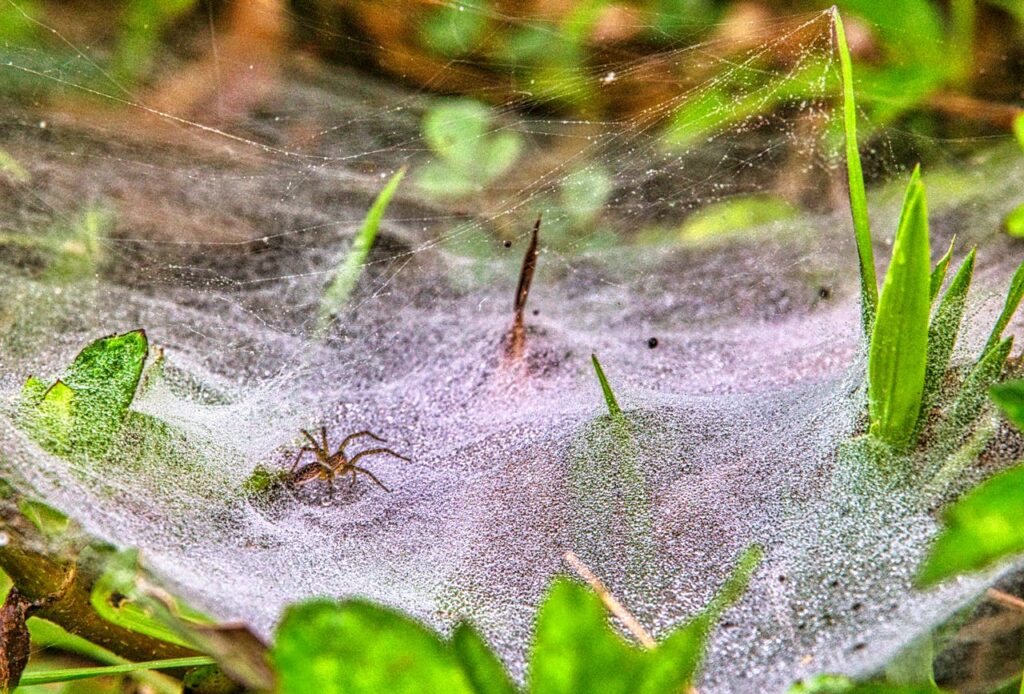
What is Spider Silk Made Of?
Spider silk is made primarily of amino acids, such as glycine and alanine, arranged in a crystalline and amorphous pattern. These components give silk its strength and flexibility.
Within the spider’s abdomen, silk proteins exist in a liquid form, which solidify upon exiting the spider’s spinneret.
Furthermore, each type of silk gland produces a different kind of silk for tasks such as:
- Web construction
- Egg sac protection
- Prey wrapping
- Mating rituals
- Draglines for movement
As a result, silk production is a marvel of evolutionary engineering, serving multiple life-sustaining functions.
Facts About Spiders: Water Resistance and Durability
One of the lesser-known properties of spider’s silk is its water resistance. This allows water spiders, the only fully aquatic spider species, to construct underwater bubble webs that act as a diving bell.
Interestingly, this structure allows the spider to remain submerged for long periods, storing oxygen for breathing.
This feature demonstrates how silk is adaptable across extreme habitats.
How Spiders Compare to Other Arachnids
Although often confused with insects, spiders belong to a separate class of arthropods—Arachnida—which includes scorpions, ticks, and mites. What sets spiders apart is their unique combination of:
- Two main body segments
- Eight legs
- Fanged mouthparts with venom glands
- The ability to spin silk
Because of these traits, spiders have become one of the most successful predators in the invertebrate world. Across central America, tropical areas, and deserts alike, spiders fulfill roles that no other arachnids can replicate.
Facts About Spiders: Frequently Asked Questions
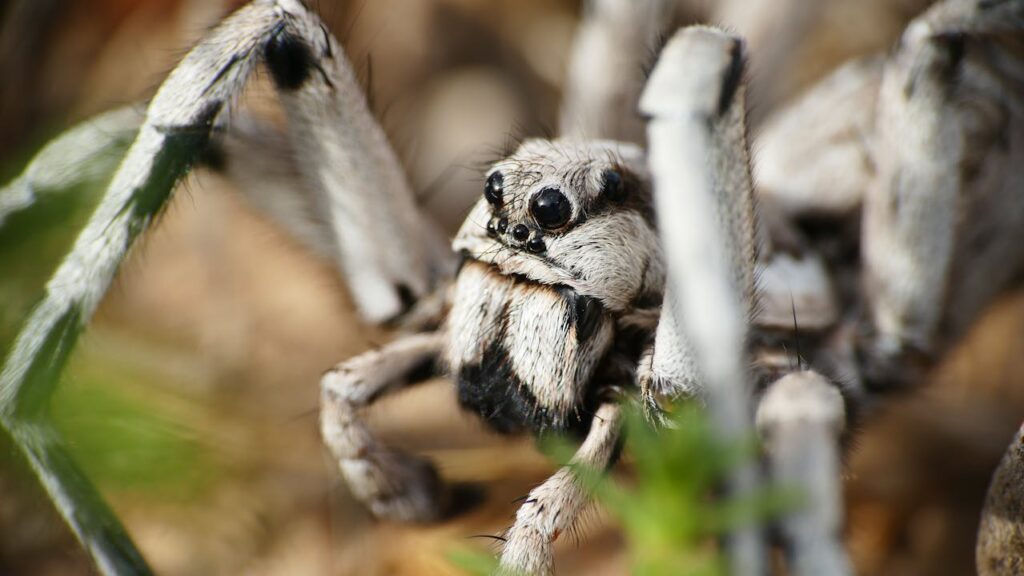
What are the most common house spiders?
The most common house spiders include cellar spiders, American house spiders, and jumping spiders. These spiders are generally harmless and help reduce the number of indoor pests.
Do all spiders spin webs?
No, not all spiders spin webs. While many are web-building spiders, others, like wolf spiders and jumping spiders, hunt actively and rely on speed and stealth.
Why do spiders have eight legs?
The eight legs give spiders superior mobility and balance. These pairs of legs are used for movement, sensing vibrations, and manipulating silk.
What should I do if I find a spider infestation?
If you suspect a spider infestation, it is best to identify the species first. Most are harmless. Keep your home clean, seal entry points, and remove webs regularly to discourage them.
How do spiders help the environment?
Spiders control populations of harmful insects, reducing the need for chemical pesticides. Their presence in gardens and homes is often beneficial.
Why do dead spiders curl up?
Upon death, a spider’s blood flow and hydraulic system cease, causing its legs to curl inward. This is due to the way spider’s muscles extend and contract using internal pressure.
Spiders and the Human Imagination
Over the centuries, spiders have woven themselves into mythology, folklore, and popular culture. In many civilizations, these eight-legged creatures symbolize patience, creativity, and resourcefulness.
Despite their frequent portrayal as symbols of fear, they are also viewed with admiration in various cultures for their intricate spider’s web designs and unmatched hunting tactics.
Interestingly, the fear of spiders is often rooted more in misinformation than danger. Studies suggest that educating people about facts about spiders significantly reduces arachnophobia.
The next time you spot a spider, it might help to recall that it is likely playing an unseen role in pest control around your home.
Facts About Spiders: Spiders and Scientific Innovation
Spiders have also inspired innovations in science and technology. Spider silk, due to its strength, lightness, and flexibility, is being studied for applications ranging from:
- Biomedical stitches
- Bulletproof fabrics
- Biodegradable fishing lines
- Artificial ligaments
This level of interest emphasizes how the spider’s silk is more than just a thread—it’s a blueprint for future technology. Scientists have even begun synthetic production of silk proteins to replicate their properties without harvesting from real spiders.
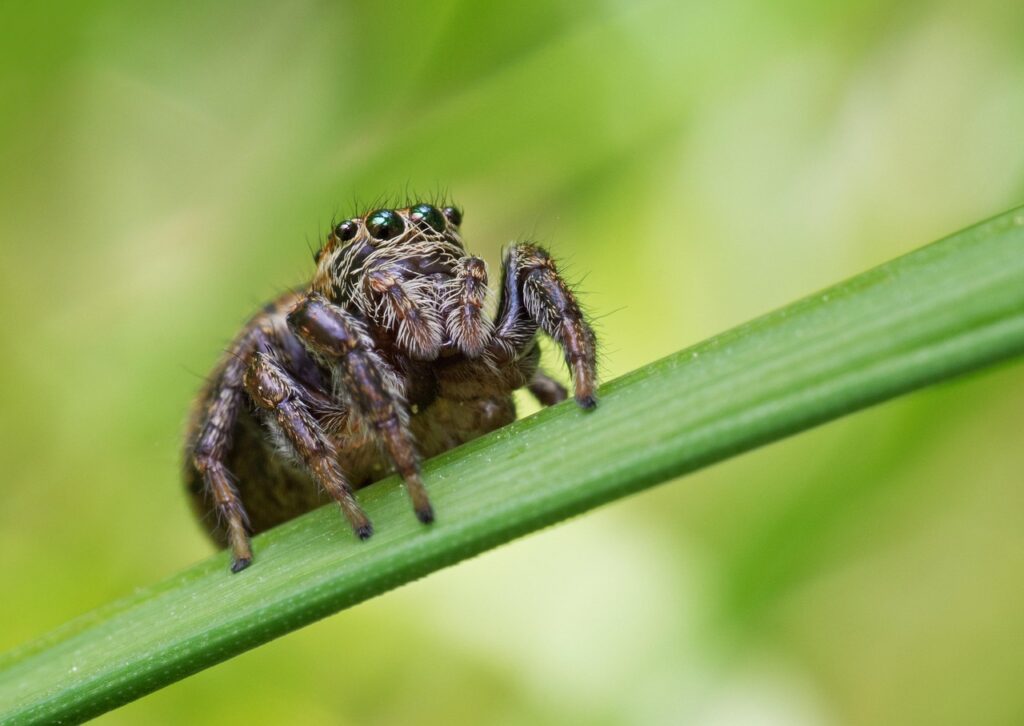
Facts About Spiders Conclusion: Embracing the World of Spiders
In conclusion, spiders deserve more appreciation than fear. Through a better understanding of these creatures—whether it’s their intricate silk production, their fascinating hunting strategies, or their role in maintaining ecological balance—we come to recognize their true value.
From web-building spiders to active hunters like wolf spiders and jumping spiders, every species adds to the remarkable tapestry of arachnid diversity.
The female spiders that guard their young, the male counterparts that perform elaborate dances, and the unique behaviors of species like the ogre-faced spider and bagheera kiplingi all contribute to an incredible narrative of survival, adaptation, and innovation.
If you have some free time, it might be helpful to check out this article Fascinating Facts About Ladybugs. It covers some relevant points.
Ultimately, the more we learn about spiders, the less they seem like alien invaders and more like fascinating co-inhabitants of our world.
So, the next time a garden spider weaves its new web near your window, take a moment to appreciate its mastery. After all, with so many compelling facts about spiders, there’s always something new to discover.



